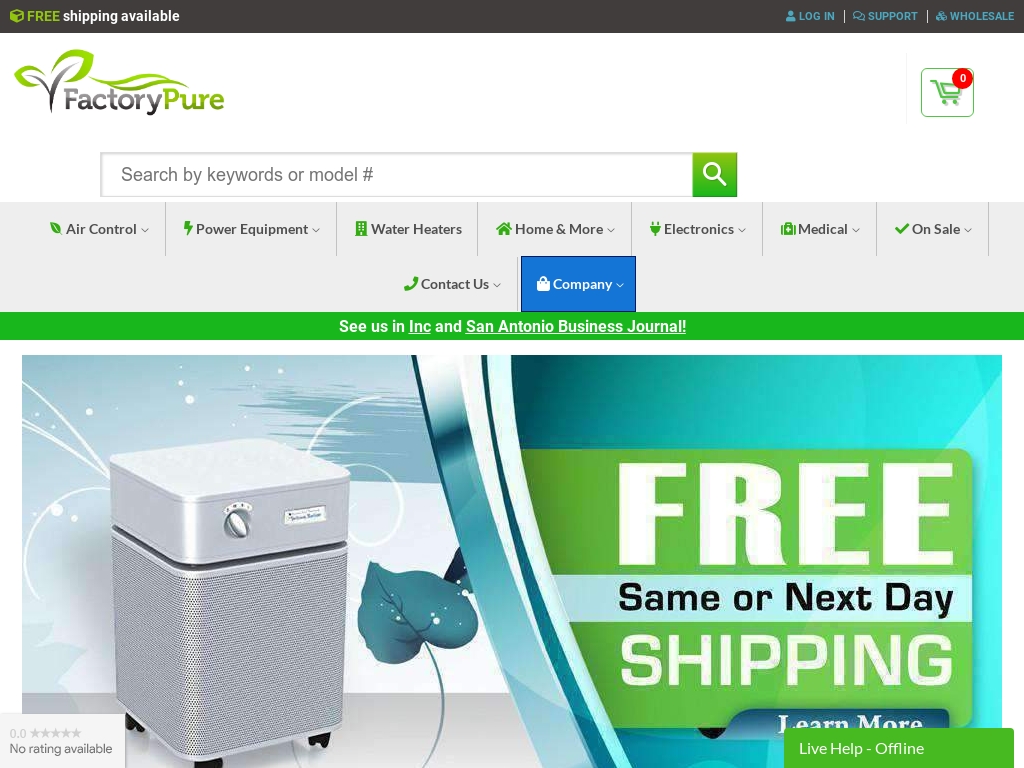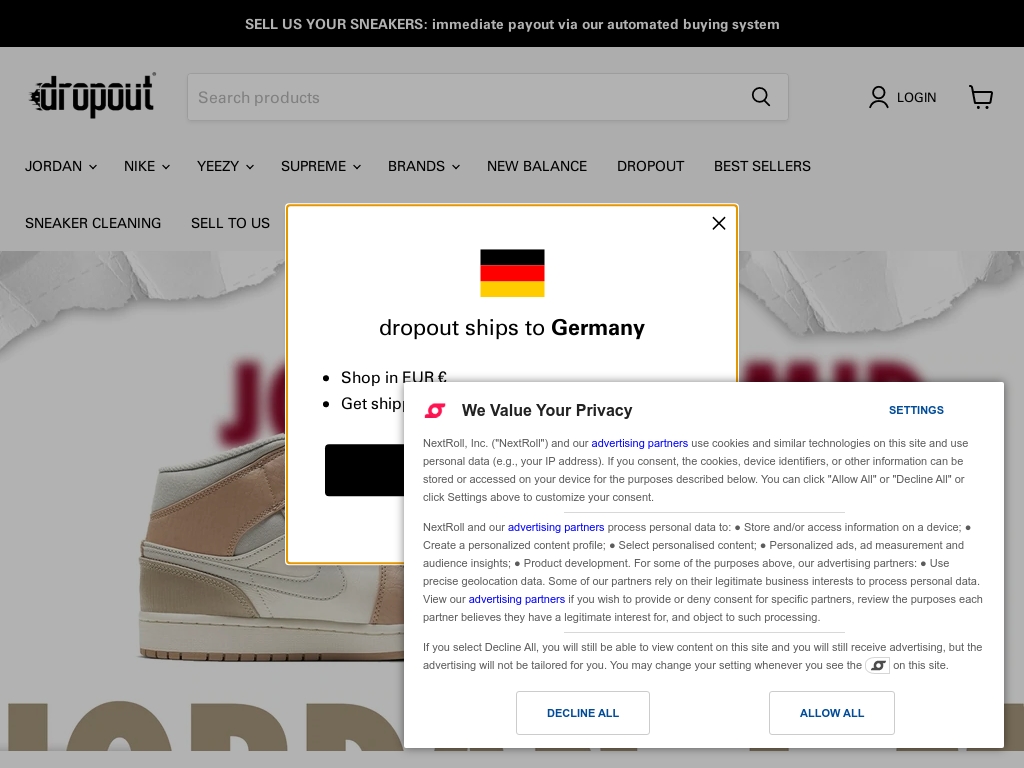
8 Retail Business Success Stories [2024]
Thinking about launching your own venture? Start a retail business. This concept is straightforward but loaded with potential.
A retail business involves selling products directly to consumers. You could set up a physical storefront, an online shop, or both. It’s about connecting people with the goods they need or want, from fashion and electronics to home goods and specialty items.
This idea appeals to those who enjoy curating products and creating an inviting shopping experience. It’s not just about selling items, but crafting a brand that resonates with your customers. Success in retail requires good market research, stock management, and customer service.
Retail offers the chance to build something tangible, watch it grow, and directly interact with your audience. For those with an eye for trends and a knack for business, the retail world offers a rewarding challenge.
In this list, you'll find real-world retail business success stories and very profitable examples of starting a retail business that makes money.
1. FactoryPure ($36M/year)
Eugene Ravitsky and his brother, Mike, co-founded FactoryPure after their previous venture in eCommerce ran into trouble. They identified air purifiers as a niche category with potential, built relationships with manufacturers, and utilized a drop-ship model to bootstrap the business. Today, FactoryPure generates around $3M per month in revenue and has achieved consistent growth by carefully managing gross margins and ad spend.
How much money it makes: $36M/year
How much did it cost to start: $5K
How many people on the team: 12

Two brothers co-founded FactoryPure, an online retailer with a focus on generators, which generated around $3M per month in revenue and had cumulative sales of $6.1M in 2018.
2. Stuckey’s Corporation ($24M/year)
In 2019, Stephanie Stuckey bought back her family's roadside retail chain, Stuckey's, which had fallen into corporate control and lost many stores. With a focus on brand loyalty and word-of-mouth marketing, Stephanie managed to turn a profit within six months and has since expanded the business by purchasing a pecan shelling and candy-making plant. Stuckey's is now reviving the nostalgic brand by offering a variety of pecan snacks and candies, and they are focused on expanding their online and retail presence.
How much money it makes: $24M/year
How much did it cost to start: $35
How many people on the team: 40
Stuckey's, the first roadside retail chain founded in 1937 by W.S. Stuckey, Sr., went through corporate leadership before Stephanie Stuckey bought the company in 2019 and, within six months, managed to start turning a profit by relying on brand loyalty and word-of-mouth marketing to focus on product sales and re-interest in road-tripping.
3. B2C Furniture ($12M/year)
surged to $1.3 million, a 66% increase compared to the previous year, while online sales reached $2.6 million, a staggering 171% increase. The future looks bright for B2C Furniture as they continue to expand their product range, open new showrooms, and further establish themselves as a leader in sustainable e-commerce furniture.
How much money it makes: $12M/year
How many people on the team: 15
Anesley Clarke, the founder and CEO of B2C Furniture, achieved a 132% increase in revenue that primarily focuses on selling directly to end-users with their sustainable e-commerce furniture business that offers an extensive range of carefully crafted furniture which is constructed with hardwood and environmentally conscious design.
4. Dropout SRL ($1.68M/year)
Kola Tytler, the founder of dropout, came up with the idea for his business after learning about the underground sneaker resale market and self-teaching himself to code a sneaker bot. He later teamed up with others to create software that collected data and ran statistical analysis, which led to the creation of HypeAnalyzer. Frustrated with university, Kola decided to bring the ultimate sneaker shopping experience to Italy, leading to the birth of dropout.
How much money it makes: $1.68M/year
How much did it cost to start: $120K
How many people on the team: 8

Founder Kola Tytler managed to build a profitable business, Dropout, worth over $2.5 million by selling limited edition sneakers and streetwear, despite having no prior experience and juggling medical school; the company saw over 50,000 in-store visitors and over $100k in sales in December 2021 alone and raised €750k via equity crowdfunding in 6 days.
5. Upper Limits ($1.44M/year)
Matthieu Fortin, the CEO of Upper Limits, started the company in 2013 with the goal of creating a place where medical cannabis patients could find education and guidance. Inspired by his personal experience with the health benefits of vaporization, he saw an opportunity to provide new product technology education and fill a gap in the market. With an initial investment of $30,000, he bootstrapped the business and focused on sourcing high-quality products and building relationships with vendors and customers. Word of mouth and a strong online presence, including Google tools, have played a significant role in attracting and retaining customers for Upper Limits.
How much money it makes: $1.44M/year
How much did it cost to start: $30K
How many people on the team: 7

Upper Limits, a hybrid brick-and-mortar/e-commerce company located in Springfield, IL that sells dispensary, smoke shop products, and custom glass pipes, has succeeded in generating 366% greater sales revenue than their industry peers by facing challenges head-on and diversifying their revenue streams.
6. Truffaux ($600K/year)
Founders Imogen and her partner started their business in 2007 after moving to Ecuador. Imogen, who didn't bring a hat with her to the motherland of Panama hat production, designed her own at a local hat maker, which attracted attention from tourists. Realizing they had become hat makers, they aimed to create original designs and sell them online to the global market. However, they soon discovered that selling online was not effective, prompting them to focus on opening popup stores in various locations.
How much money it makes: $600K/year
How much did it cost to start: $10K
How many people on the team: 3

How a couple traveling the world turned a vision of creating unique Panama hats into a $15k/month business selling over 150 models across five stores on three continents, and now expanding into new products and opening a local store.
7. Leze Apparel Inc. ($540K/year)
out of debt. In just 6 months, we have managed to turn our business around and are projected to generate 3 times more revenue than in 2019. We have experienced steady growth at a rate of 30% every month and have successfully attracted a community of women who resonate with our mission of comfortable and sustainable workwear.
How much money it makes: $540K/year
How much did it cost to start: $5K
How many people on the team: 0
This case study features LEZE the Label, a sustainable workwear brand that experienced 30% month-over-month growth and eliminated $180,000 in production debt, sharing insights on their crowdfunding strategy, customer-centric approach, and partnerships.
8. Charleston Weekender ($24K/year)
Liz Martin, the founder of The Charleston Weekender, started her business as a side hustle while working as a speech-language pathologist. She began by offering interior decorating services and selling Turkish towels on her website. Over time, she narrowed her focus to creating content for other brands on social media and opened a retail shop called Cannonborough Collective. With low start-up costs and consistent growth, Liz was able to double her revenue from $35k to $70k in just one year.
How much money it makes: $24K/year
How many people on the team: 0
Liz Martin founded a lifestyle blog and balloon & gift shop in Charleston, SC, doubling her revenue from $35k to $70k in just one year through a combination of sponsorships, social media workshops and sales from her shop, leveraging the popularity of Instagram and narrowing her business focus.

Download the report and join our email newsletter packed with business ideas and money-making opportunities, backed by real-life case studies.

Download the report and join our email newsletter packed with business ideas and money-making opportunities, backed by real-life case studies.

Download the report and join our email newsletter packed with business ideas and money-making opportunities, backed by real-life case studies.

Download the report and join our email newsletter packed with business ideas and money-making opportunities, backed by real-life case studies.

Download the report and join our email newsletter packed with business ideas and money-making opportunities, backed by real-life case studies.

Download the report and join our email newsletter packed with business ideas and money-making opportunities, backed by real-life case studies.

Download the report and join our email newsletter packed with business ideas and money-making opportunities, backed by real-life case studies.

Download the report and join our email newsletter packed with business ideas and money-making opportunities, backed by real-life case studies.


